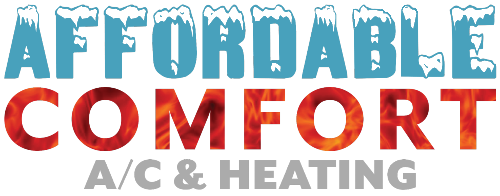Pros and Cons of Ductless Air Conditioning Units
Ductless air conditioning units are an efficient and cost-effective way to cool a home.
Ductless air conditioning units are an efficient and cost-effective way to cool a home. But like any other machinery, these systems have pros and cons to evaluate before purchasing.
Here's what one should know about these units:
Pros
Easy to install
Ductless air conditioning units are easy to install. They are typically wall-mounted and connected to an outdoor unit via refrigerant piping, eliminating the need for costly and extensive ductwork. Installation of a single indoor unit usually takes less than a day and can be completed by a professional contractor with minimal disruption to the home or business.
Very quiet
Since the system's main components are outdoors, ductless air conditioning systems can run quietly indoors. This is great for people who don't want an intrusive noise level in their home due to air conditioners running. Most systems produce noise below 40 decibels, similar to normal conversation levels, making them suitable for use in many residential and commercial environments.
Energy-efficient
Ductless air conditioning units are highly energy efficient since they do not require ducts to move cooled air throughout a space, meaning that no power gets lost through air leakage or ductwork. This makes them ideal for buildings with irregularly shaped rooms or openings where traditional HVAC systems may not be feasible or cost-effective.
Additionally, most ductless models feature built-in inverter technology, which further enhances efficiency by automatically adjusting compressor speeds according to the cooling requirements of each space. This results in lower energy bills compared to traditional AC units.
Customized temperatures
With multiple indoor units linked together on one system, it's possible to set different temperatures in different rooms or zones according to personal preference or occupant needs. For example, units in the bedroom and the living room can work at different rates while they connect to the same condenser. This can be extremely useful in large homes or businesses.
Cons
Higher upfront cost
The initial cost of installing a ductless air conditioner is higher than with a traditional HVAC system due to the need for an outdoor unit, additional wiring, and installation costs. Each indoor unit requires its connection back to an outdoor condenser, along with separate power cables running from the condenser back into the building.
Refrigerant leaks
Although ductless units are more durable than regular window AC units, there's still the risk of refrigerant leaks if the unit needs to be installed correctly according to manufacturer specifications. This can lead to costly repairs and health risks from exposure to freon gas released from damaged lines or condensers.
Limited cooling capacity
Most ductless air conditioning units have limited cooling capacity compared to larger central AC systems due to their smaller size and design limitations. They may not be suitable for homes with ample square footage or multiple stories.
Involve professional heating and cooling experts
Installing ductless air conditioning can be a difficult decision to make, especially without the help of an expert. By calling professional heating and cooling experts, one can take advantage of their knowledge and experience in the field.
Professional technicians can advise on the best options for one's home and budget, help with installation and ensure the system works correctly. They can also suggest ways to increase efficiency and lower costs in the long run.
When you need AC repair and maintenance, AC installation, and ductless AC services for your residential or commercial property in the Phoenix, AZ Metro area, Call Affordable Comfort A/C and Heating at 602-574-1205. Our company is licensed, bonded, and insured.

